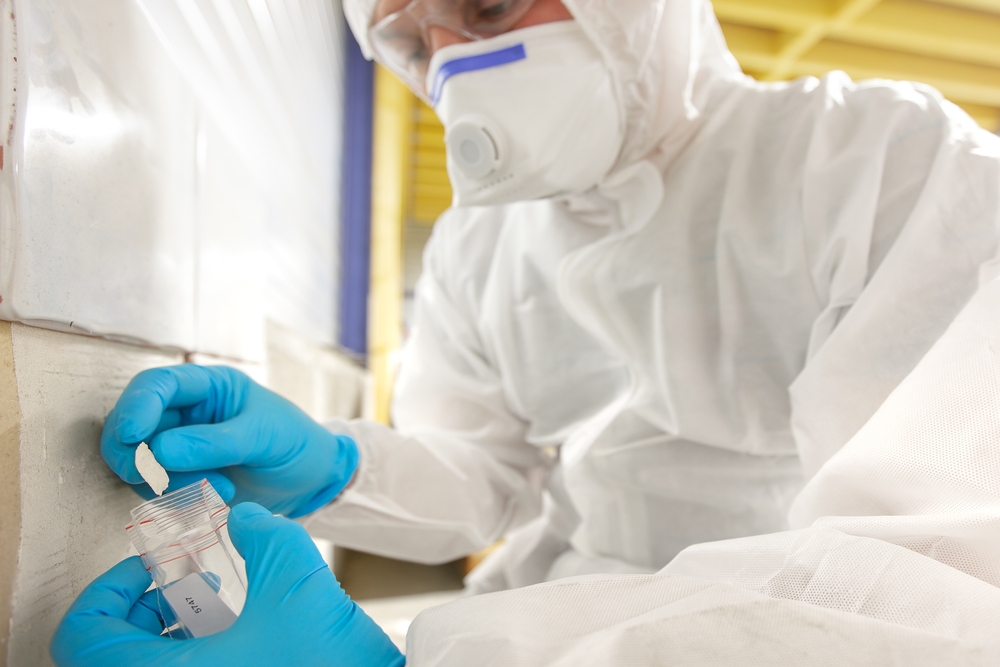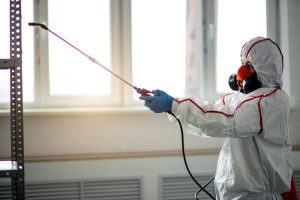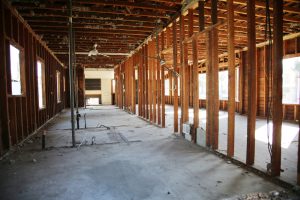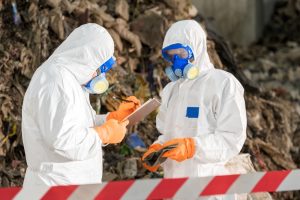The EPA estimates that around 20% of all commercial or public buildings have some asbestos-containing materials in them. As such, when your development company needs to renovate a building constructed in the 1970s or earlier, a professional should test for asbestos as one of the first steps in the planning process.
Knowing your building has asbestos in it formulates the strategy for demolition before renovation because how long it takes to remove asbestos determines the timeline for the rest of the project. Our guide lets you know the process when a professional tests for asbestos at the beginning stages of renovation.
Why Do You Need to Test for Asbestos?
Asbestos is a public health hazard that can cause severe medical issues in the lungs after exposure. It’s a cancer-causing material that does not degrade easily over time, and exposure to asbestos needs to be eliminated as much as possible.
Identifying asbestos in a building helps prevent accidental exposure, particularly during renovations or demolitions. Disturbing asbestos-containing materials may increase the risk of releasing dangerous asbestos fibers. Without proper testing, construction workers and building occupants may unknowingly face hazardous conditions, leading to long-term health consequences. Testing helps establish protocols to either safely remove or encapsulate the asbestos.
Additionally, testing is necessary to comply with local and federal regulations. Laws governing asbestos management require proper identification and handling of ACMs in buildings, especially those constructed before the 1980s. Failing to test and manage asbestos properly can result in legal penalties and increased liability for developers.
Health Risks of Asbestos
The greatest health risks associated with asbestos exposure come from lung cancer and permanent lung damage. That’s because individual fibers are very small. Wearing personal protective equipment (PPE) is vital when handling asbestos.
Asbestos may lay dormant in the body for 10 years before signs or symptoms occur. Lung cancer, asbestosis, and mesothelioma are the three main medical problems associated with asbestos exposure. Many times, these conditions are permanent.
Signs of asbestos exposure may include:
- Weight Loss
- Face Swelling
- Loss of Appetite
- Fatigue
- Shortness of Breath
- Inability to Inhale Deeply
- Chest or Abdomen Pains
Anyone who believes they have been exposed to asbestos should seek medical attention.
Where Asbestos is Commonly Found
Asbestos is typically found in structures built from the 1930s to the 1970s. It was commonly found in insulation, adhesives for roofing materials, and even glue because of its fireproofing materials.
Someone testing for asbestos might look for it in:
- Adhesives used for roofing materials
- Insulation in everything: wires, pipes, lights, walls, ceilings, floors
- Glue for flooring and ceiling tiles
- Adhesives used for siding
- Textured coatings like the popcorn-style ceilings
- Sprayed coatings on ceilings, walls, beams, and columns
Unfortunately, asbestos is rarely found in places where people can see it readily and easily. It may be hidden. That’s why professional asbestos testing is vital for your project.
Professional Asbestos Testing
Testing for asbestos in older buildings involves collecting material samples and analyzing them in a certified laboratory. First, a qualified asbestos tester identifies potential asbestos-containing materials (ACMs), which can include insulation, ceiling tiles, floor tiles, and roofing materials. Trained professionals inspect the building to locate these materials and determine the likelihood of asbestos presence based on the building’s age and materials used.
After identification, the professional carefully collects samples by wetting the materials to prevent asbestos fibers from becoming airborne. They use specialized tools to extract small portions of the suspected materials and place them in sealed containers. To avoid contamination or exposure, the area is often isolated, and protective gear is worn throughout the process. The samples are then labeled and sent to an accredited lab for analysis.
At the lab, technicians examine the samples using polarized light microscopy (PLM) or transmission electron microscopy (TEM) to determine if asbestos is present. These tests identify the types and concentrations of asbestos fibers. If asbestos is found, recommendations for managing or removing it are made, depending on the condition of the material and the risk it poses. These reports are made available to the selective demolition team and relevant stakeholders in the project.
The Role of a Qualified Asbestos Inspector
A qualified asbestos inspector has the expertise to identify potential asbestos-containing materials (ACMs) and assess the condition of these materials to determine the risk of fiber release. The overall goal is to accurately evaluate areas where asbestos may be present ahead of informing the asbestos removal team.
The inspector’s responsibilities include collecting material samples without disturbing asbestos fibers unnecessarily. They take precautions to prevent exposure throughout the sample-taking process while making sure the samples stay intact ahead of testing. Asbestos testers and inspectors also manage documentation, labeling, and transport of the samples to accredited labs for analysis.
Beyond sampling, the inspector interprets lab results and provides recommendations based on the findings. If asbestos is detected, they advise on the appropriate next steps, whether encapsulating the material or arranging for safe removal. Their assessments will guide stakeholders in creating a plan moving forward.
Safety Tips for Asbestos in a Building
Following strict safety protocols reduces the chances of exposure to asbestos fibers. Whether the asbestos is intact or exposed, you need to be careful when handling these fibers. You should always assume a material contains asbestos unless proven otherwise. Strict control measures should be followed to prevent contamination.
When dealing with asbestos, wearing personal protective equipment (PPE) is essential. Here’s a list of safety tips and PPEs for handling asbestos:
- Wear a half-face or full-face respirator paired with a NIOSH-rated N100, R100, or P100 filter. P100 filters are purple and are the ideal solution for protection against asbestos.
- Utilize disposable coveralls, head covers, and foot covers made of a synthetic fabric that prevents asbestos fibers from passing through.
- Wear thick shoes and gloves made of leather or other synthetic material that can’t tear or let in air easily. Boots can be reinforced with plastic air-tight covers.
- Ensure the workspace is well-ventilated but avoids creating drafts that can spread fibers.
- Wet the materials before handling them to prevent fiber release.
- Contain and properly dispose of asbestos waste in sealed bags with appropriate labeling.
- Dispose of asbestos fibers properly at a licensed disposal facility or site.
Contact Environmental Demolition Group for Commercial Asbestos Removal
Asbestos removal is just one step when it comes to cleaning up a site that has hazardous materials. Our team can help you with the process of removing asbestos, other hazardous materials, and waste in general ahead of your renovation project.
Contact Environmental Demolition Group to request a consultation.




